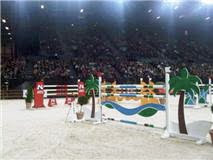Having read an article in the Financial Times concerning the investment potential of art and the endless growth of the contemporary market; I was inspired to examine this phenomenon from a financial perspective (for my dissertation). Thought i'd share some tidbits from my research... That one might intercept the elitist, close-knit community that is the art world as we know it, and determine its "value" through a series of standardized performance measurement techniques, was intriguing and controversial all at once.
We live in a consumption driven society, where daily news reports record increasing sales and investment in art at record-breaking prices. It is almost impossible for an outsider to fathom the validity of such investments, yet more and more people are getting involved. The past decade has seen the art world boom into a million pound industry with a culture so utterly consumed in a buying frenzy, that the snowballing effects can be viewed on a larger scale. Aside from the ever increasing demand thoroughly outweighing supply, more and more art specific magazines are lining the shelves as their respective subscriptions increase, art colleges are as popular as ever, and owning a commercial gallery seems the new business venture.
To those outside the art world, theories and reasoning with regards to pricing, valuations and such, may seem absurd if not obscene. What is a canvas worth, and why is it worth that? How does one establish prices nd how are prices justified in relation to other asset classes? In an interview with Vanity Fair, Tobias Meyer, worldwide head of contemporary art at Sotheby's in New York, stated that "there is something about when you buy a great work of art; it will transport you into another sphere. (...) That is ultimately why people buy art, regardless of how much it costs. The prices are not prices; they're relationships to individual worth." (Vanity Fair 2006: 196).




































No comments:
Post a Comment